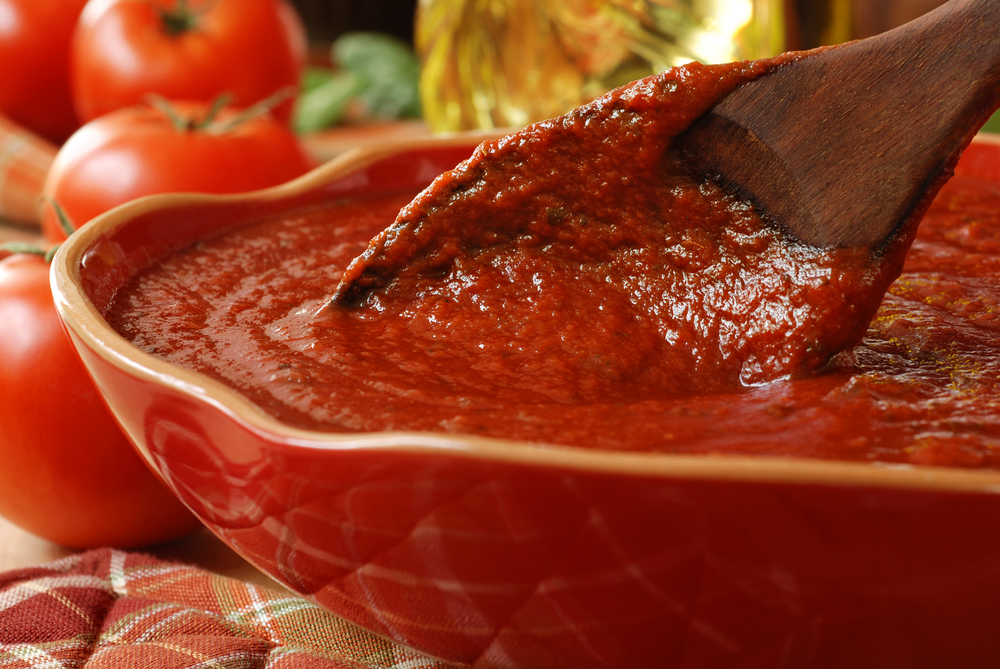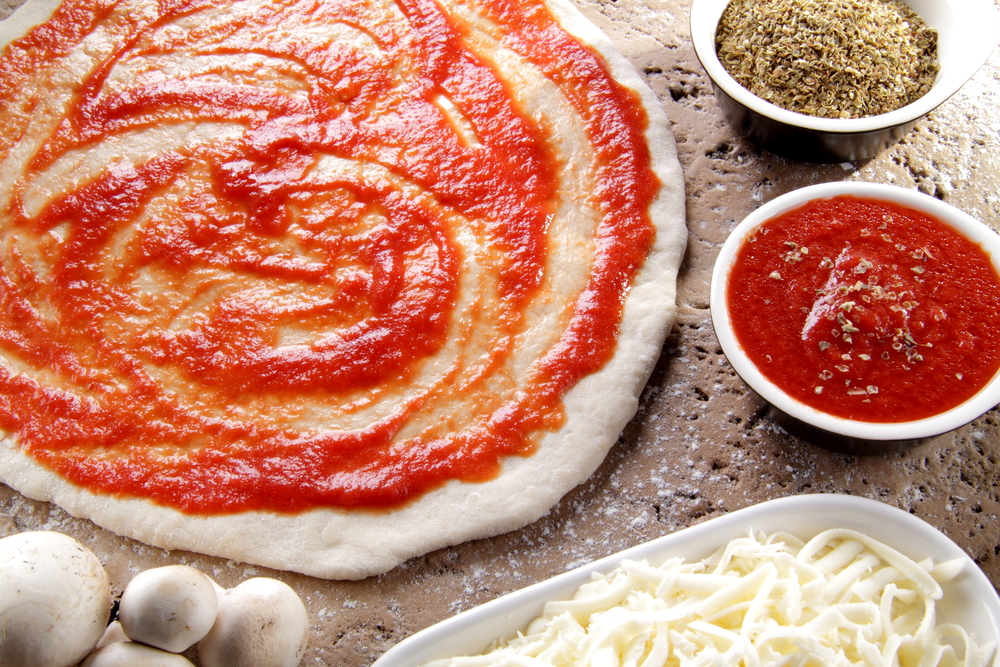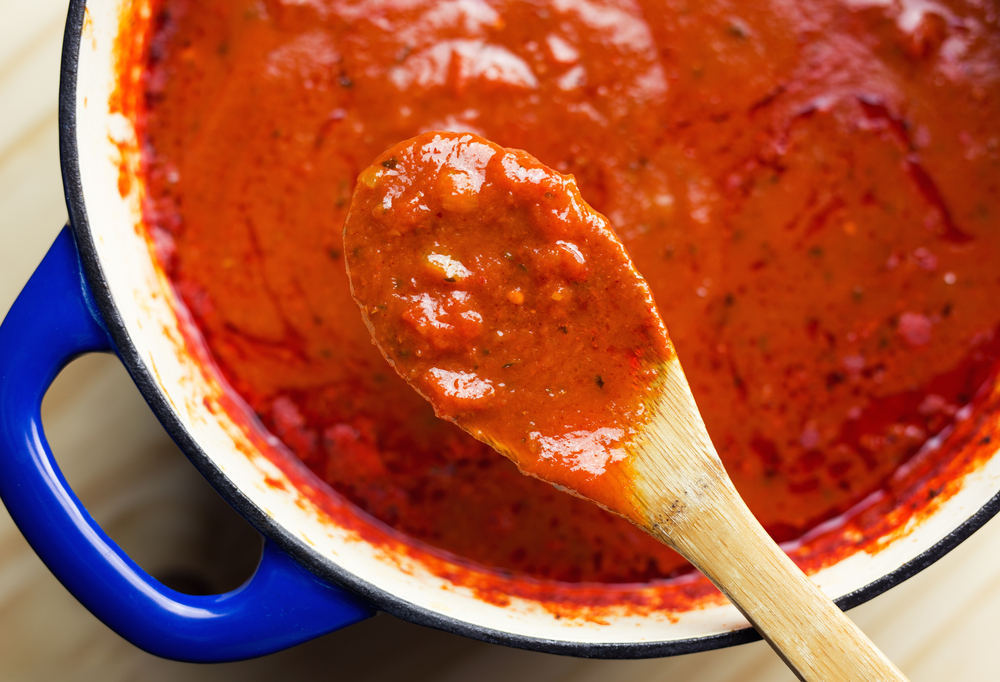Two of the most popular foods worldwide are pizza and pasta. Both of these dishes can be prepared in a variety of ways, but the sauce used in each is a major distinction. Despite their apparent similarity, pizza sauce and pasta sauce are really different.

Pizza sauce is often a pureed tomato sauce mixed with salt, pepper, and other seasonings. To give it a distinctive flavor, it is seasoned with herbs like oregano, basil, and garlic.
While pasta sauce is simmered and frequently contains additional ingredients including celery, onions, and carrots. In general, it is thinner than pizza sauce, which makes it simpler to apply on pasta.
While the ingredients in both sauces may be similar, how they are made and how much of each ingredient is used can have a big impact on how they taste and feel.
It’s critical to comprehend the variations in the sauces used in each dish if you enjoy both pizza and pasta. Despite their apparent similarity, pizza sauce and pasta sauce are really different.
Knowing the distinctions between the two helps guide your cooking decisions and guarantee that your meals are consistently great.
We’ll go into more detail about the variations between pizza sauce and pasta sauce in the sections that follow.
Pizza Sauce vs Pasta Sauce: What’s the Difference?
When it comes to pizza sauce and pasta sauce, the differences may seem subtle, but they can make all the difference in the world. We’ll break down the main differences between these two sauces below.

Cooking Method
The most significant difference between pizza sauce and pasta sauce is the cooking method. Pizza sauce is typically uncooked, while pasta sauce is cooked. This difference in preparation can affect the texture and flavor of the sauce.
Consistency
Another significant difference between pizza sauce and pasta sauce is the consistency. Pizza sauce is usually thicker than pasta sauce.
That’s because pizza sauce has a higher concentration of tomato paste, which gives it a thicker consistency.
In contrast, pasta sauce often uses tomato paste combined with water to create a thinner consistency.
Ingredients
Pizza sauce and pasta sauce share many of the same ingredients, but they differ in the amounts and preparation of those ingredients.
Pizza sauce typically has fewer ingredients than pasta sauce, which tends to be more complex in flavor. Pizza sauce usually contains tomatoes, garlic, salt, and pepper. Pasta sauce may include additional vegetables, herbs, and spices.
Usage
Finally, pizza sauce and pasta sauce are used for different purposes. Pizza sauce is primarily used as a base for pizza, while pasta sauce is used as a topping for pasta dishes.
While you could technically use either sauce for both purposes, they are best suited for their intended use.
Pizza sauce and pasta sauce may seem similar, but they have distinct differences in cooking method, consistency, ingredients, and usage.
Understanding these differences can help you choose the right sauce for your dish and achieve the best possible flavor.
Pizza Sauce
When it comes to pizza sauce, we believe that the simpler the better. A good pizza sauce should have a rich tomato flavor with just the right balance of seasoning to complement the toppings.
In this section, we’ll cover the key ingredients, preparation, flavor, and texture of pizza sauce.

Ingredients
The basic ingredients for pizza sauce are tomato sauce or puree, tomato paste, garlic, salt, sugar, and Italian seasoning.
Some recipes may also call for additional herbs like oregano or basil, or a splash of balsamic or red wine vinegar for added depth of flavor. Olive oil is another common ingredient that can be used to sauté minced garlic and onions before adding the tomato sauce.
Preparation
Making pizza sauce is a simple process that involves simmering the ingredients together until they reach the desired consistency.
To start, combine the tomato sauce or puree, tomato paste, garlic, salt, sugar, and Italian seasoning in a pot.
Bring the mixture to a simmer and let it cook for 10-15 minutes, stirring occasionally until it thickens into a smooth puree. For a chunkier sauce, you can leave it slightly less pureed.
Flavor and Texture
The flavor of pizza sauce should be balanced so that it does not overpower the other toppings. It should have a rich tomato flavor with a hint of garlic and herbs.
The texture should be thick enough to hold up the toppings but not too thick that it becomes difficult to spread on the dough.
The water content of the sauce should be just right, too much and it will make the pizza soggy, too little and the pizza will be dry.
Pizza sauce should be a complement to the pizza, not the star of the show. It should enhance the flavors of the toppings and the crust, without overpowering them.
A good pizza sauce should be able to stand up to the heat of the oven without burning or becoming too watery.
With the right ingredients and preparation, you can make a delicious homemade pizza sauce that will take your pizza to the next level.
Pasta Sauce
When it comes to pasta sauce, there are a variety of options available. From tomato-based sauces to creamy Alfredo, there’s something for everyone.
In this section, we’ll take a closer look at the ingredients, preparation, flavor, and texture of pasta sauce.

Ingredient
The ingredients used in pasta sauce can vary widely depending on the type of sauce being made.
Some common ingredients include tomato sauce or puree, garlic, olive oil, herbs, spices, water, salt, sugar, and seasoning.
Meat-based sauces may include ground beef, onions, and minced garlic, while creamy sauces may include Alfredo sauce.
Preparation
The preparation of pasta sauce can also vary depending on the type of sauce being made. Tomato-based sauces are typically slow-simmered to allow the flavors to meld together, often with the addition of a bay leaf and fresh herbs.
Creamy sauces, on the other hand, are typically made by combining Alfredo sauce with other ingredients like garlic or balsamic vinegar.
Flavor and Texture
The flavor and texture of pasta sauce can also vary widely. Tomato-based sauces tend to have a rich, savory flavor with a slightly sweet undertone.
Creamy sauces, on the other hand, tend to be rich and decadent, with a smooth and creamy texture.
It’s important to note that while herbs and spices can add depth and complexity to pasta sauce, it’s important not to overdo it.
Too many herbs or spices can overpower the sauce, making it difficult to enjoy. Additionally, it’s important to balance the acidity of tomato-based sauces with a touch of sugar or red wine vinegar.
Pasta sauce is a versatile and delicious addition to any pasta dish. Whether you prefer a slow-simmered tomato sauce or a creamy Alfredo dip, there’s no shortage of options to choose from. So grab a plate of pasta and some breadsticks, and enjoy!
Conclusion
After comparing pizza sauce and pasta sauce, we can see that they have some similarities but also some key differences.
Pizza sauce tends to be thicker and has a higher concentration of tomato paste, making it more suitable for baking in the oven.
On the other hand, pasta sauce is cooked and often has added ingredients such as onions, garlic, and herbs, making it more flavorful and versatile for use in different pasta dishes.
When it comes to cooking, it is important to choose the right sauce for the job. If you are making pizza, using a pizza sauce will give you the desired texture and flavor.
If you are making pasta, a pasta sauce will provide a more complex flavor profile that will complement the dish.
It is worth noting that both pizza sauce and pasta sauce can be made from scratch using fresh ingredients.
This allows you to control the flavor and texture of the sauce to your liking. Additionally, both sauces can be customized with additional spices, herbs, and other ingredients to suit your taste.
The choice between pizza sauce and pasta sauce depends on the dish you are making and your personal preferences.
We hope this article has helped you understand the differences between the two and make an informed decision when cooking your next Italian-inspired meal.







Add comment